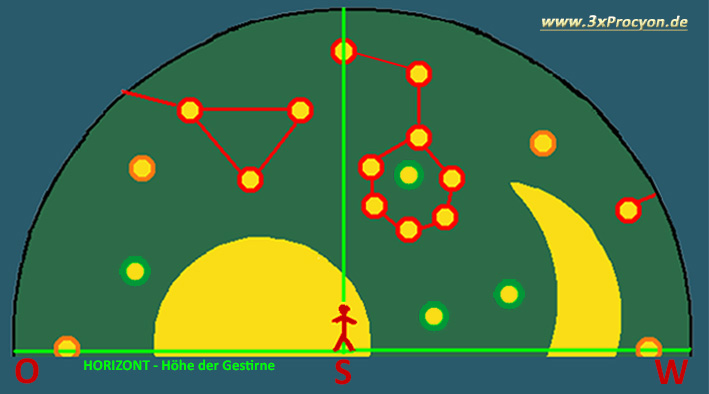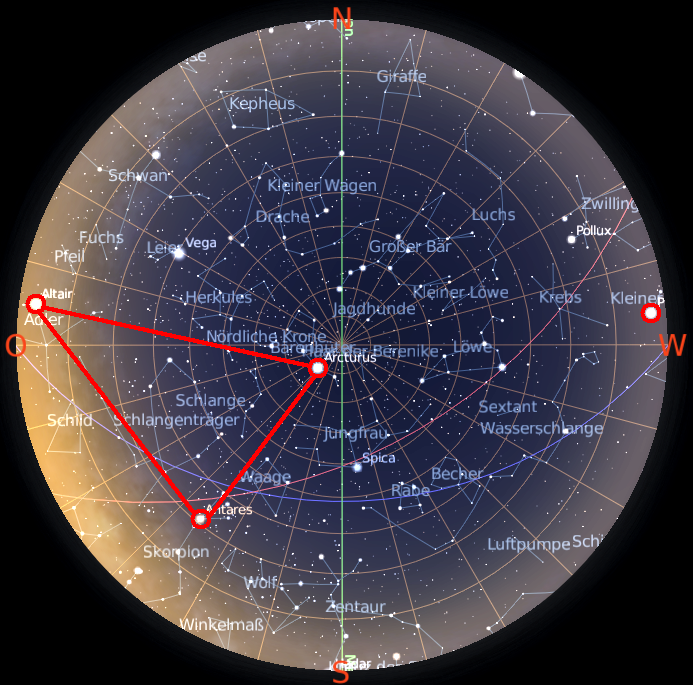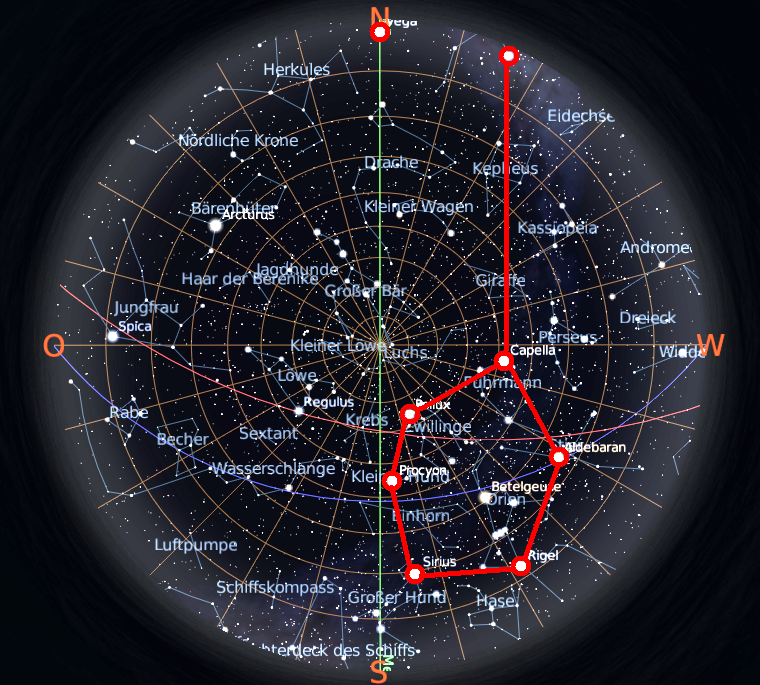The Nebra Sky Disc shows two large star constellations and exactly 6 hours in between:
The Winter Hexagon and at the same moment the stars Deneb and Vega in the north. Just six hours later appears a large triangular constellation when Procyon, the last star of the hexagonal constellation, stood close to the horizon, directly in the west.
In the computer map on the right hand, we see the whole hexagon of stars as it has just exceeded the north-south axis, the so-called meridian, in about 1950 B.C., in Central Germany. The star Procyon / Canis Minor has just left his highest point, so now he continues the way down to his setting place. In addition the bright star Vega / Lyra was standing exactly in the north point and also at the northern horizon, but further to the west, Deneb / Cygnus could be seen. These two last stars were only visible, if you turned about 180 degrees and looked straight to the north. With Vega in the north point, they formed together with the hexagon of stars a timely exact fixed north-south constellation.
Left computer map shows a larger triangle consisting of remarkable bright stars, which is even larger as the before mentioned winter hexagon. It is composed of the star Altiar /Aquila, close to the east point and Arcturus / Bootes approximately in the zenith, as well as the luminous Antares / Scorpius lower in the south-east. On the opposite side of the rising Altair we will see again the bright star Procyon / Canis Minor, shortly before his setting, so that only for a short moment a maximum east-west constellation could be observed.
And the star inside the hexagon, between the two constellations of the zodiac, is probably a planet.
If we look now at both computer maps, to the southern area of the Sky Disc, we see Procyon only close to the meridian and then just still above the western sky edge. For this arc run Procyon on the minute needs exactly six hours.
These before mentioned big star constellations are illustrated on the Nebra Sky Disc.




